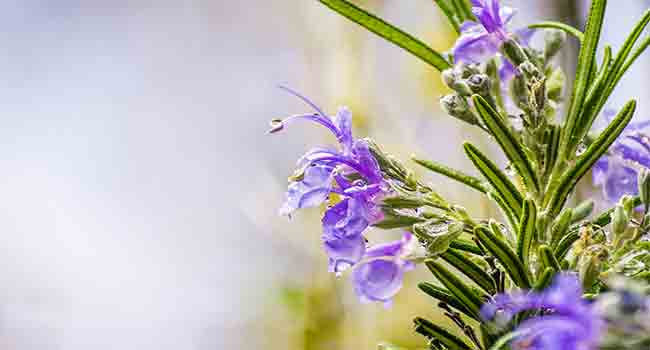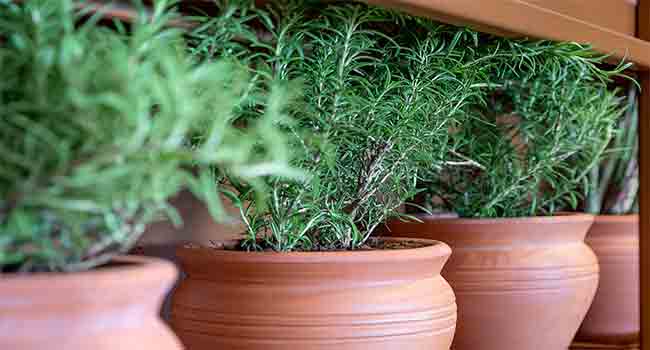Rosemary (Rosmarinus officinalis) has graced gardens and tables for millennia. Ancient Greeks and Romans revered it for its fragrance and medicinal properties. Its symbolism of remembrance, loyalty, and friendship persists today, making rosemary a beloved addition to gardens worldwide. Culinary uses span savory dishes and teas, while traditional medicine touts its cognitive and antioxidant potential.
The Enchantment of a Rosemary-Adorned Garden Gate
Imagine a garden gate framed by cascading rosemary, releasing its invigorating aroma with every breeze. This picturesque scene is not merely aesthetic; it offers an abundance of benefits:
Rosemary’s Sensory Symphony
| Feature | Description |
| Fragrance | Rosemary’s distinctive, pine-like scent creates a refreshing ambiance |
| Appearance | Evergreen needles add year-round greenery, while delicate blue, purple, or pink blossoms attract pollinators |
| Taste | Rosemary’s pungent flavor elevates culinary creations |
Why Plant Rosemary at Your Garden Gate: Practical and Symbolic Benefits
Beyond its beauty, a rosemary-adorned garden gate offers a multitude of practical and symbolic advantages:
Natural Pest Control: Rosemary’s Aromatic Armor
Rosemary’s potent fragrance isn’t just pleasing to our senses; it acts as a natural deterrent, creating an invisible shield around your garden gate and beyond. Let’s explore how this aromatic armor protects your plants from unwanted visitors:
Deer and Rabbits: A Fragrant Repellent
Imagine a hungry deer or rabbit approaching your garden gate, lured by the promise of tender greens. But as they get closer, the pungent aroma of rosemary hits their sensitive noses. It’s like an unwelcome blast of strong perfume, sending them hopping or bounding in the opposite direction. Rosemary’s strong scent disrupts their foraging instincts, protecting your other plants from becoming a midnight snack.
Aphids and Mosquitoes: Nature’s Insect Repellent
Aphids and mosquitoes, those tiny but persistent pests, are also deterred by rosemary’s aromatic oils. Compounds like cineole and camphor create an invisible barrier, making your garden gate and its surroundings less appealing to these buzzing and biting insects. This natural repellent helps maintain a healthier garden environment, allowing you to enjoy your outdoor space without unwanted interruptions.
Cabbage Moths and Carrot Flies: Disrupting the Cycle
Cabbage moths and carrot flies can wreak havoc on your vegetable garden. But by strategically planting rosemary near susceptible crops, you can disrupt their life cycle. The strong scent masks the attractive odors of these plants, making it harder for pests to locate their targets. This simple yet effective strategy can help protect your harvest and ensure a bountiful yield.
Pro Tip: For optimal pest control, consider interplanting rosemary with your vegetables or creating a fragrant border around your garden gate. This will maximize the impact of its aromatic defense and create a more resilient garden ecosystem.
Remember, while rosemary is a valuable tool in natural pest control, it’s not a foolproof solution. Combining it with other organic pest control methods and maintaining good garden hygiene will ensure a healthy and thriving garden.

Best Rosemary Varieties for Planting near a Garden Gate
|
Rosemary Variety |
Growth Habit | Ideal for |
| Tuscan Blue | Upright | Hedges, framing the gate |
| Miss Jessop’s Upright | Upright | Hedges, framing the gate |
| Arp | Upright | Hedges, framing the gate |
| Prostratus | Trailing | Cascading over walls, containers |
| Irene | Trailing | Cascading over walls, containers |
| Huntington Carpet | Trailing | Cascading over walls, containers |
| Blue Boy | Compact | Smaller spaces, containers |
| Salem | Compact | Smaller spaces, containers |
Ideal Growing Conditions:
- Climate: Rosemary thrives in warm, Mediterranean-like climates. Think sunny days, mild winters, and well-drained soil.
- Soil: Imagine a light, airy soil that allows water to drain easily – that’s what rosemary loves. Aim for a slightly acidic, sandy loam soil.
- Sunlight: Rosemary basks in the sun’s glory. Aim for at least six hours of direct sunlight per day to keep it happy and thriving.
Rosemary: Myth vs. Reality
While rosemary has earned its reputation as a beneficial herb, some claims require closer examination.
Supernatural Pest Repellent?
While rosemary’s pungent aroma can indeed deter certain pests like aphids and mosquitoes, it’s not an impenetrable force field. Think of it more as a subtle discouragement rather than a magical pest-banishing spell.
Miracle Memory Booster?
The scent of rosemary might evoke memories and create a sense of focus, but don’t expect it to instantly transform you into a memory champion. Scientific studies on its cognitive benefits are still ongoing.
Cure-All Elixir?
Rosemary has been used in traditional medicine for centuries, and while it contains compounds with potential health benefits, it’s not a substitute for professional medical advice. Always consult a healthcare provider for any health concerns.
The Real Deal
Antioxidant Powerhouse
Rosemary is packed with antioxidants like rosmarinic acid and carnosic acid, which help protect your cells from damage caused by free radicals. Think of them as tiny bodyguards for your cells!
Anti-inflammatory Potential
Research suggests that rosemary may possess anti-inflammatory properties, which could be beneficial for overall health. However, more studies are needed to fully understand its effects.
Culinary Delight
Let’s not forget the most obvious benefit! Rosemary’s distinctive flavor adds a delightful touch to a wide array of dishes, from roasted vegetables to grilled meats and even cocktails.

Garden Gate Designs with Rosemary: A Fragrant Welcome
Elevate your garden gate into a captivating focal point with the aromatic allure of rosemary. Here are a few design ideas to inspire your creativity:
Trellis: A Living, Fragrant Archway
Imagine a trellis adorned with rosemary vines, their delicate leaves and blossoms creating a living archway that beckons visitors into your garden. This design not only adds vertical interest but also infuses the air with rosemary’s invigorating scent, offering a sensory delight with every step.
Pro Tip: Choose a sturdy trellis that can support the weight of mature rosemary. Consider using a metal or wooden structure for durability and aesthetic appeal.
Topiary: Sculpted Elegance
For a formal and sophisticated look, train rosemary into a topiary masterpiece. Whether it’s a classic cone, a playful ball, or a graceful spiral, a rosemary topiary adds a touch of artistry to your garden gate.
Pro Tip: Start with a young rosemary plant with a strong central leader. Regularly prune and shape it as it grows to maintain its desired form.
Wreath: A Festive & Aromatic Welcome
Celebrate the seasons or special occasions with a rosemary wreath adorning your garden gate. The fragrant sprigs create a welcoming ambiance while adding a touch of rustic charm.
Pro Tip: Gather fresh rosemary sprigs and weave them into a circular frame. You can add other natural elements like dried flowers, berries, or ribbons for a personalized touch.
Additional Ideas
- Rosemary Hedge: Plant a low-growing rosemary hedge along your garden gate for a fragrant and evergreen border.
- Mixed Border: Combine rosemary with other flowering perennials and ornamental grasses for a vibrant and textured display.
- Container Garden: Grow rosemary in decorative pots and place them strategically around your garden gate for a versatile and mobile design.
Remember, the possibilities are endless when it comes to incorporating rosemary into your garden gate design. Let your creativity bloom and create a fragrant welcome that reflects your unique style and personality.
Growing and Maintaining Rosemary: A Gardener’s Guide
Rosemary’s resilience and adaptability make it a relatively low-maintenance plant, but a little care goes a long way in ensuring its health and longevity, especially when strategically placed at your garden gate.
Planting and Care Tips: Nurturing Your Rosemary
| Care Aspect | Details |
| Planting |
Spring or fall. Sunny spot with well-drained soil. Allow ample space for growth.
|
| Watering |
Infrequent, deep watering. Avoid overwatering.
|
| Fertilizing |
Light feeder. Annual balanced, slow-release fertilizer in spring.
|
| Pruning |
Regular pruning for bushiness. Prune lightly after flowering. Harvest sprigs as needed.
|
Pest and Disease Management: Keeping Rosemary Healthy
Rosemary is generally resistant to pests and diseases, but keep an eye out for:
- Spider Mites: These tiny pests can cause yellowing and webbing on leaves. Control them with insecticidal soap or a strong spray of water.
- Powdery Mildew: This fungal disease can appear as a white powdery coating on leaves. Ensure good air circulation and avoid overhead watering to prevent it.

Rosemary at the Garden Gate: FAQs
1. What are the best rosemary varieties for planting near a garden gate?
- Upright Varieties: ‘Tuscan Blue’, ‘Miss Jessop’s Upright’, ‘Arp’ – Ideal for creating a fragrant hedge or framing the gate.
- Trailing Varieties: ‘Prostratus’, ‘Irene’, ‘Huntington Carpet’ – Perfect for cascading over walls or spilling over the sides of containers near the gate.
- Compact Varieties: ‘Blue Boy’, ‘Salem’ – Suitable for smaller spaces or container gardening near the gate.
2. How far from the gate should I plant rosemary?
Consider the mature size of the chosen variety. Generally, leave at least 1-2 feet of space between the rosemary and the gate to allow for growth and easy access.
3. Can rosemary withstand foot traffic near the gate?
While rosemary is fairly resilient, avoid planting it directly in areas with heavy foot traffic. The constant trampling can damage the plant and compact the soil.
4. How often should I water rosemary at the garden gate?
Once established, rosemary is drought-tolerant and prefers infrequent, deep watering. Water only when the top few inches of soil are dry. Avoid overwatering, especially during winter.
5. What pests and diseases should I watch out for?
Rosemary is generally pest and disease resistant, but keep an eye out for spider mites, powdery mildew, and root rot (especially in poorly drained soil).
6. Can I grow rosemary in a pot near my garden gate?
Absolutely! Rosemary thrives in containers, making it perfect for those with limited space or who want to move the plant around. Choose a well-draining pot with adequate space for root growth.
7. What are some good companion plants for rosemary at the garden gate?
Lavender, thyme, sage, oregano, and other Mediterranean herbs are excellent companions for rosemary. They share similar growing requirements and create a fragrant and visually appealing ensemble.
8. Can I prune rosemary to maintain its shape near the gate?
Yes, regular pruning is essential to maintain the shape and size of your rosemary, especially when it’s planted near a gate. Prune lightly after flowering to encourage bushier growth and prevent legginess.
9. How can I use rosemary from my garden gate in the kitchen?
Rosemary’s aromatic leaves add a delightful flavor to various dishes. Use fresh or dried sprigs to season roasted meats, vegetables, soups, stews, and even bread. You can also infuse rosemary in olive oil or vinegar for a flavorful condiment.
10. Are there any safety concerns with planting rosemary near a garden gate?
Rosemary is generally safe for humans and pets. However, some people may have allergies to its pollen or essential oils. It’s always a good idea to check with a healthcare professional if you have any concerns.
Conclusion
In conclusion, rosemary at the garden gate is a testament to the harmonious blend of nature’s beauty and functionality. Its aromatic allure, pest-repellent properties, and attractiveness to pollinators make it a valuable addition to any garden entrance. By choosing the right variety, providing adequate care, and incorporating creative design ideas, you can transform your garden gate into a fragrant, welcoming, and thriving focal point. Whether you seek to deter pests, attract pollinators, or simply create a sensory delight, rosemary stands ready to fulfill its role as a multifaceted guardian and aromatic ambassador at your garden’s threshold.

